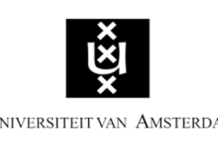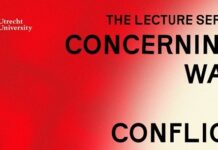Nancy A. Khalil
Middle East Eye / September 2, 2024
Universities across the US pay lip service to diversity, equity and inclusion, while suppressing calls for Palestinian liberation.
As the school year begins, universities across the United States are confronting their policies on free speech, protest and freedom of assembly.
Some are revising these policies to include swift consequences for those who dare to follow what have been student protest norms for decades. Similar threats loom for university staff and faculty – not only those who protest, but even some who simply speak out.
Such policies will ultimately hamper universities from accessing a path towards their own goals of diversity and inclusion.
In recent months, I visited more than half a dozen pro-Palestinian college encampments in North America, from the US Midwest, to the West Coast, to Canada. As an anthropologist, I was interested to observe that each called itself the “liberated zone”.
At one encampment, I heard a participant laugh at the notion of university policies on diversity, equity and inclusion (DEI), saying: “It should be DIE, not DEI. They’re using it to justify killing us.”
The camper articulated a common frustration regarding the increasingly performative function of DEI initiatives on college campuses across the country. What does this term mean without liberation?
Protesters themselves seem to be doing a better job of upholding such ideals. At the University of Michigan in Ann Arbor, during the Jewish holiday of Passover, campers held a Seder meal and welcomed everyone at the encampment to join in the celebrations.
They did not interfere with a group of opposing protesters who gathered nearby, holding pro-Israel signs. It struck me that even in the context of allowing space for peaceful dissent and opposition, the encampment was liberated.
‘We keep us safe’
From what I observed, these protest encampments aim to live by the ideals they are protesting for: freedom and justice for all, without the racially and economically infused hierarchies that dominate the world.
At the University of California, Los Angeles, which was attacked by external Zionist agitators, campers protected each other while police stood by. The officers did not intervene, and the campers did not call on them. “We keep us safe,” campers chanted.
The morning the Ann Arbor encampment was raided and forcibly dismantled, Muslims had just completed the Fajr prayer and an interdenominational Christian worship service was in progress when officers moved in.
Several encampments I visited also observed Indigenous rituals, including a Cree tobacco ceremony – exactly the type of event one imagines taking place on a college campus. During meals, campers made an effort to include kosher, halal, vegetarian, vegan and gluten-free options.
Being in a community together is the healthiest way for students to learn about, and from, each other, without objectifying or essentializing norms that might be unfamiliar to some.
The encampments also featured diverse activities, from film screenings, to holiday celebrations, to topic teach-ins with expert guest speakers. One professor who lived more than an hour away from the encampment he was visiting told me: “I will drive down here if the students host an organizing workshop. What they’re coordinating here is unbelievable.”
Such sentiments were shared with me by many others from coast to coast.
Endless cycle
After I was hired in 2017 in the first cohort of a fellowship that was a part of my university’s five-year DEI 1.0 plan (we are now on DEI 2.0), I asked a school official who was guiding the project to explain the use of the term “inclusion”.
What does it mean, I asked, for the institution to pursue inclusion, when this very concept entails a hierarchy, i e, one superior group gets to be the “includer”, while another inferior group is excluded until the former allows them in?
To his credit, he did not articulate a defence of this term, suggesting instead that we view it as a “placeholder”.
Still, the concept itself remains a pursuit. Like past efforts to foster “multiculturalism” and “tolerance”, it seems that liberal-left initiatives to address histories of marginalization and racism just can’t quite get it right. Higher education institutions have become the epicentre of both the responses to address these historic struggles for equality, and the critiques of these responses – an endless cycle.
For years, I have studied how diversity’s self-contradictory reality in higher education institutions can lead to self-exclusion. Some campuses have grappled with this by substituting other words for the standard DEI label. New York’s Cornell University whittled their office name down to “Belonging at Cornell”.
What I didn’t predict when I began this journey more than a decade ago was the accompanying attack on DEI at universities and beyond by the far right, leading some states to restrict funding for DEI work at public colleges.
Thinking about it more deeply, this move shouldn’t have come as such a surprise. DEI work is centred on identity politics, and for obvious reasons, it doesn’t make space for identities that are not marginalized, which has spurred some to revolt.
This situation also puts critical progressives in a corner: do they continue to critique DEI, or pivot to defend it from right-wing attacks as the primary vehicle in higher education aiming to address histories of systemic bias and discrimination?
Valuable lesson
Amid this backdrop, I have been stunned by the response of most higher education institutions to the encampments on their campuses.
Colleges are imagined to be sites of free speech and expression, intellectual inquiry, and encountering differences. For many, they form a bridge towards independence as adults. Most colleges have spent the better part of the new millennium ramping up their investments in DEI work.
But today, at a moment when students have united to erect encampments that have organically achieved – even amid their internal disagreements – pluralistic communities that welcome people from myriad backgrounds, universities are not embracing them, but rather treating them as a threat.
Instead of joining the encampment communities and trying to learn from their students about how to foster a culture of liberation, most university administrations have at best kept them at arm’s length, or worse, violently dismantled them. Thus, the administrations have aligned themselves with far-right interests, at the expense of the very cause of inclusion for which they’re supposedly fighting.
Rather than continuing to target students and tear down encampments, university administrations should go out and witness liberation in action. Perhaps then it could dawn on them that to centre DEI without centring liberation is a futile endeavour, resulting in DEI initiatives being viewed as performative by the very communities they claim to serve.
Liberation should not be complicated. It is most definitely possible on university campuses and around the world, if people believe in it rather than fearing it. The student encampments, at the very least, have taught us that.
Nancy A. Khalil is an assistant professor in American culture at the University of Michigan, Ann Arbor, with an appointment in its ethnic studies program for Arab and Muslim American studies











